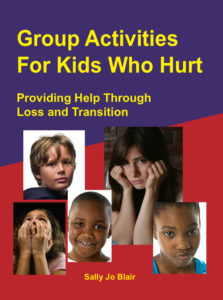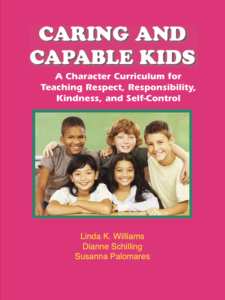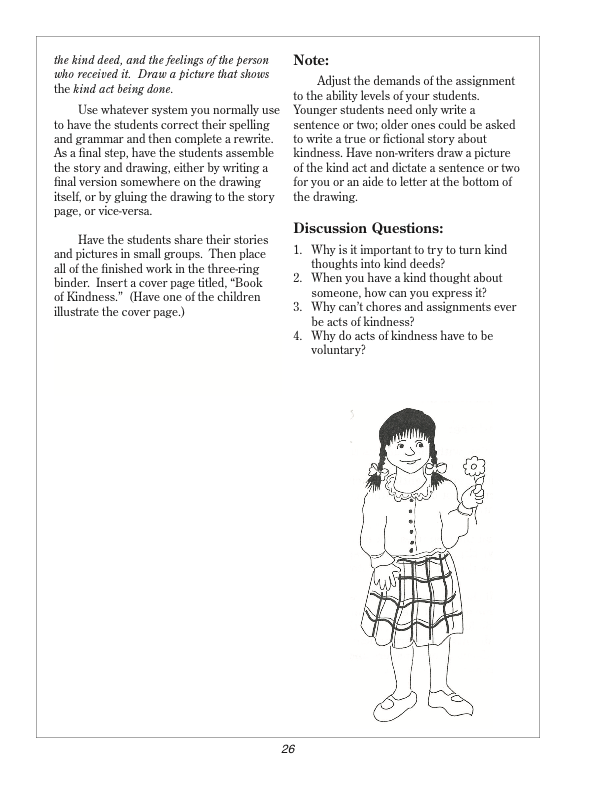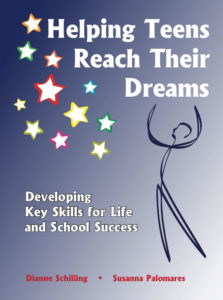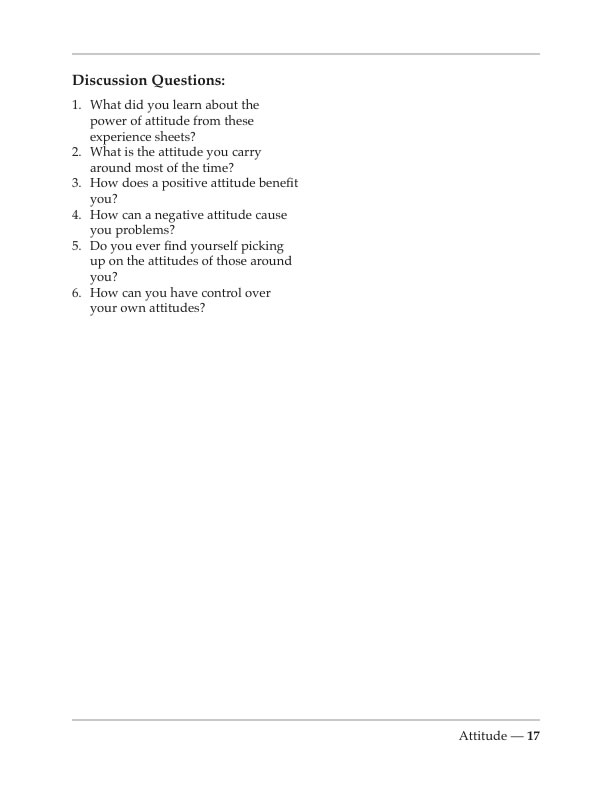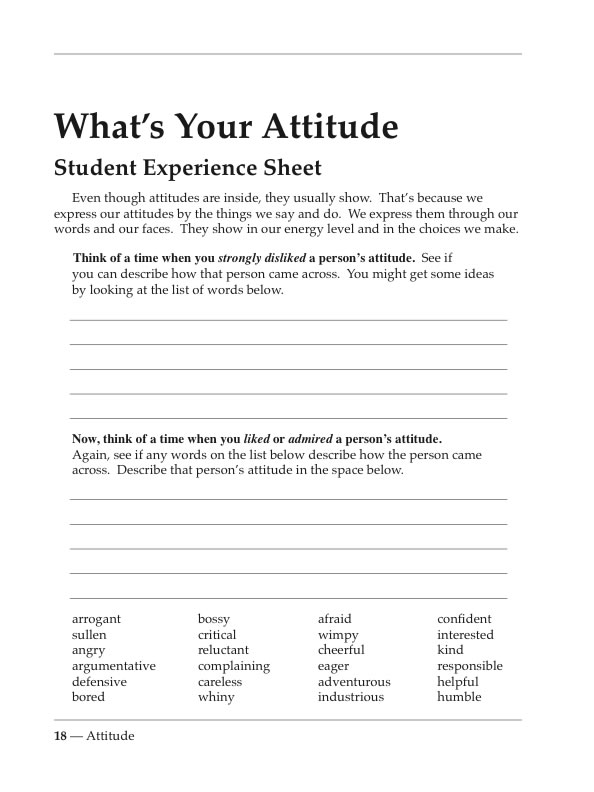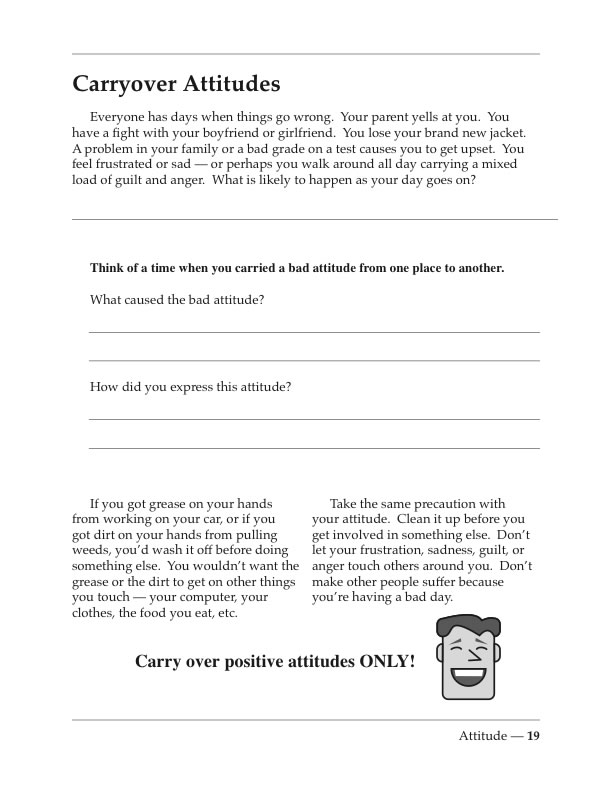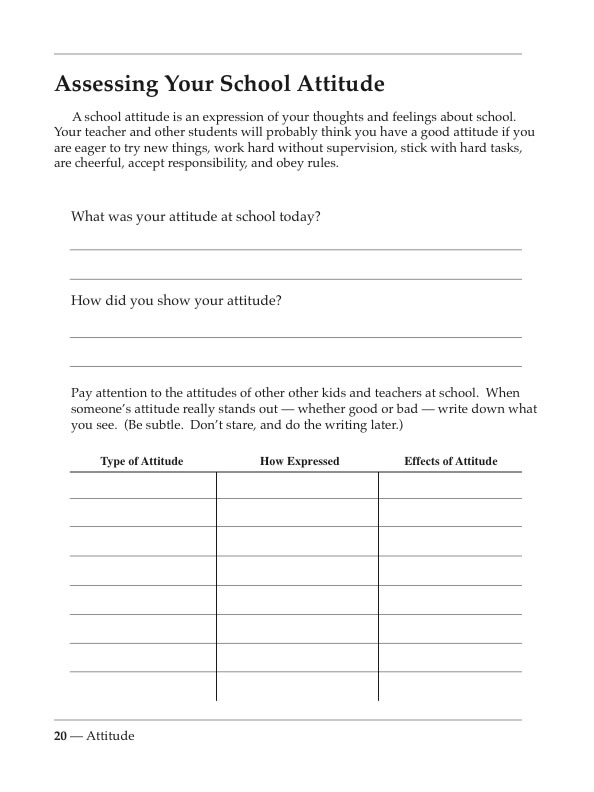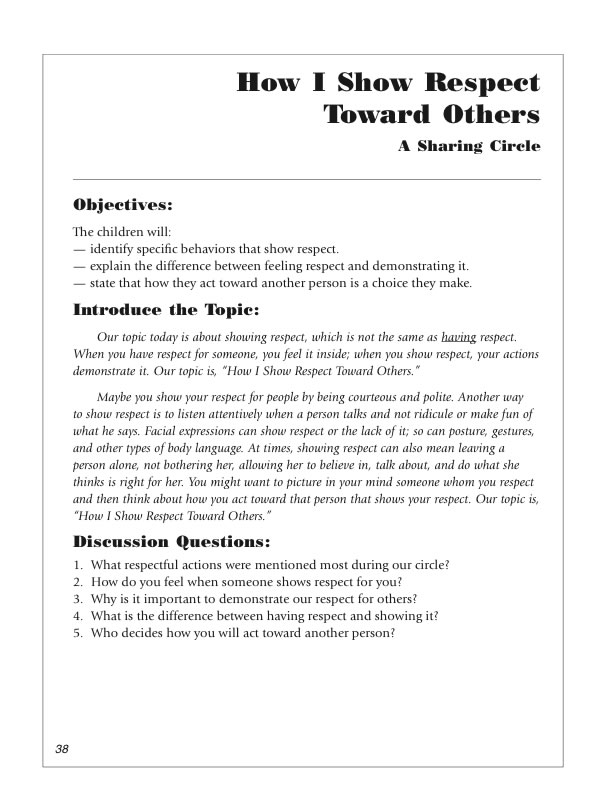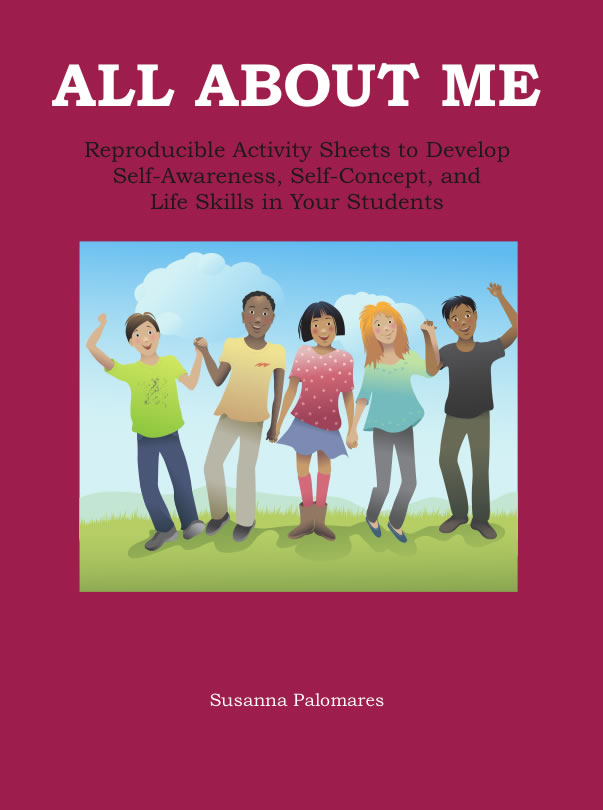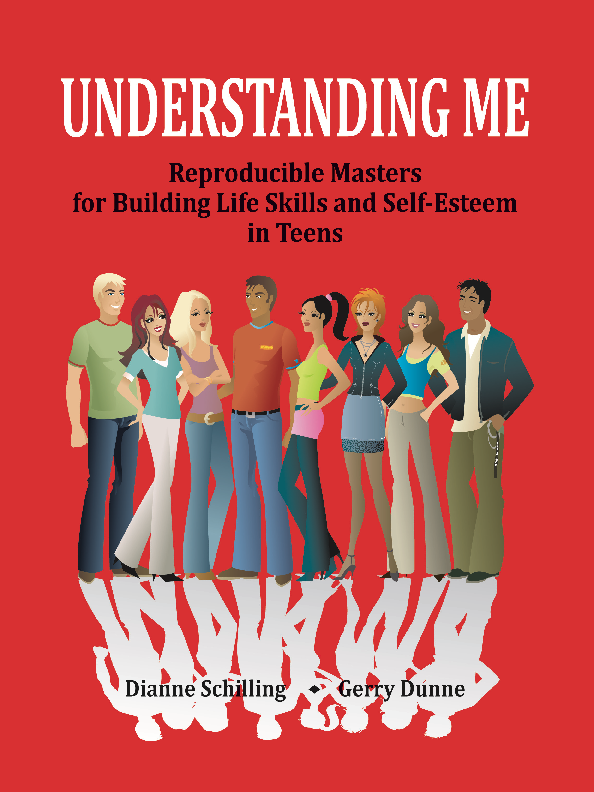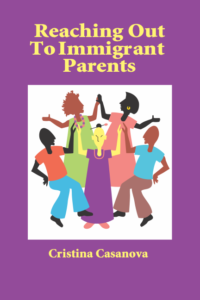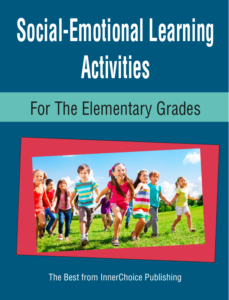Shaping Self Esteem
Students who believe in themselves, perceive themselves as being “OK,” and are not debilitated by knowledge of their weaknesses are considered to have a healthy degree of self-esteem and a sense of mastery or self-confidence. They try new challenges and do not strongly fear failure. It is likely that they have experienced success more than failure, and probably when they were successful, a significant person noted it and commented on it to them.
The ways in which significant others respond to what we do plays a critical role in whether or not we see ourselves as masterful. If others let us know they recognize our efforts and comment positively when we try or succeed, our awareness that we do have capabilities increases. Conversely, without favorable comment we are less aware of our capabilities, even if we experience success.
The Importance of Sharing Circles
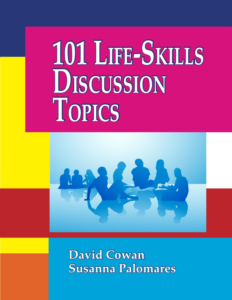
Through participating in Sharing Circles, students are routinely encouraged to explore their own endeavors and successes, and hear positive comments about their efforts. All the topics are designed to heighten students’ awareness of their own and others’ successes. Failure is a reality that is also examined. The objective, however, is not to remind students that they have failed; instead Sharing Circles enable them to see that falling short is a common, universal experience.
Comparisons and judgments are not made. The circle is not another competitive arena, but is guided by a spirit of cooperation. When students practice fair, respectful, noncompetitive interaction with each other, they benefit from the experience and are likely to employ these responsible behaviors in other life situations.
 Here’s Your Sharing Circle. Enjoy!
Here’s Your Sharing Circle. Enjoy!
Do you want more information?
• Leading a Sharing Circle
• Sharing Circle Rules
• Books and Resources
• Free Activities
• Subscribe
Go here:
Here’s How It’s Done
Gather everyone into a circle. Explain the rules for sharing, and get agreement from everyone that they will follow the rules.
Sharing Circle Rules:
- Everyone gets a turn to share, including the leader.
- You can skip your turn if you wish.
- Listen to the person who is sharing.
- There are no interruptions, probing, put-downs, or gossip.
- Share the time equally.
After everyone has shared, who wants to share, ask the discussion questions.
You can check the book out HERE.
Just click HERE to open a fully reproducible PDF of this activity and experience sheet…
If you like our blog resources and would like to receive them regularly, please subscribe here or on our website at www.InnerchoicePublishing.com
If you are already a subscriber, I hope you find this activity valuable. Help us grow our blog by sharing these activities and encouraging others to join. Thank you.
Thanks so much for reading!
Susanna
[New Post] Journal Writing Boosts SEL and Academic Skills
Why a Journal?
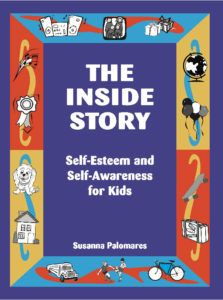
Journal writing is a vehicle for building self-awareness, personal insight, and self-esteem, and is an excellent means of developing language skills, creativity and imagination. Verbal skills, reading comprehension, and written expression are developed through regular writing, while journal drawing stimulates visual thinking and perceiving.
Encouraging students to express their feelings in the privacy of the written word allows the release of pent-up emotions that may have no other outlet. Especially in troubling times, a student can discharge in writing much of the turbulence within. Journaling can help students process emotions and move forward.
In short, a journal can be a good friend — dependable, patient, and nonjudgmental.
Your Innerchoice Resources
Today’s blog provides several journal pages taken from The Inside Story: A Journal of Self-Discovery. Intended for students in grades four through nine, it takes them on a guided tour through many of the rooms where their stories are stockpiled. It probes a few corners and brushes away the dust on a handful of memories, encouraging students to capture what they discover in journal form. Here are three different, but related, journal pages for you to try out with your students.
………………………………………………………………………..
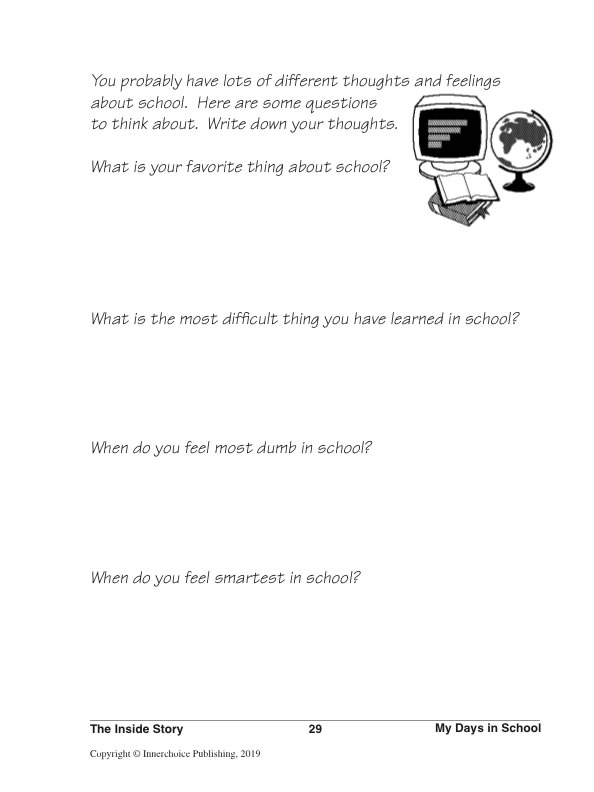
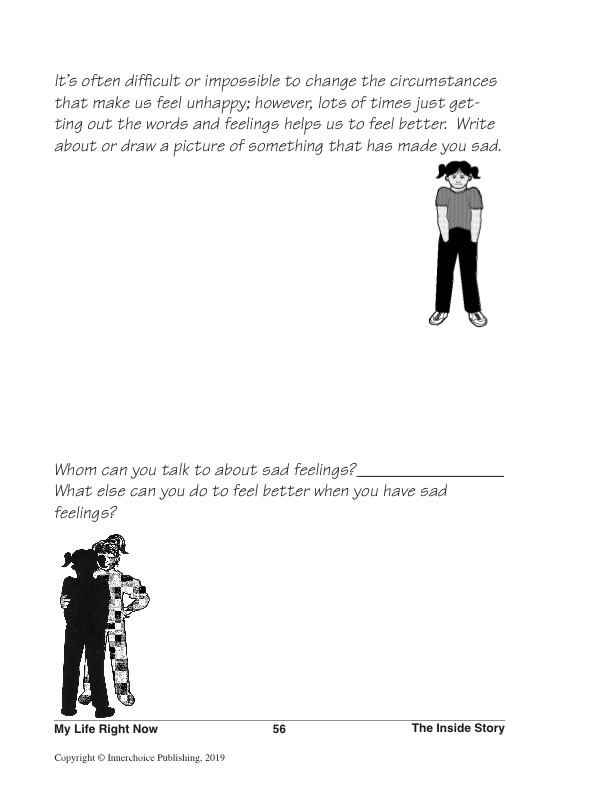

You can check the book out HERE.
Just click HERE to open a fully reproducible PDF of this activity and experience sheet…
If you like our blog resources and would like to receive them regularly, please subscribe here or on our website at www.InnerchoicePublishing.com
If you are already a subscriber, I hope you find this activity valuable. Help us grow our blog by sharing these activities and encouraging others to join. Thank you.
Thanks so much for reading!
Susanna
Helping Students Manage Negative Thinking
Students are often confronted with situations in their lives that produce hurt, anger, fear, grief, anxiety, and confusion.
Here Is A Great Resource for You
Here’s an activity that is an effective group counseling session as well as a solid classroom experience designed to harness the power of eclectic grouping by bringing students together, not only to be heard, but also to provide a support system for each other in the midst of their own hurting and healing. It is based on the premise that acknowledging hurt is one critical step in the process of healing. Developing compassion, forgiveness and moving beyond pain are other critical steps that can be facilitated in the context of group dynamics.
In this activity we are helping the students discover the power of thought and how it can help in their healing process.
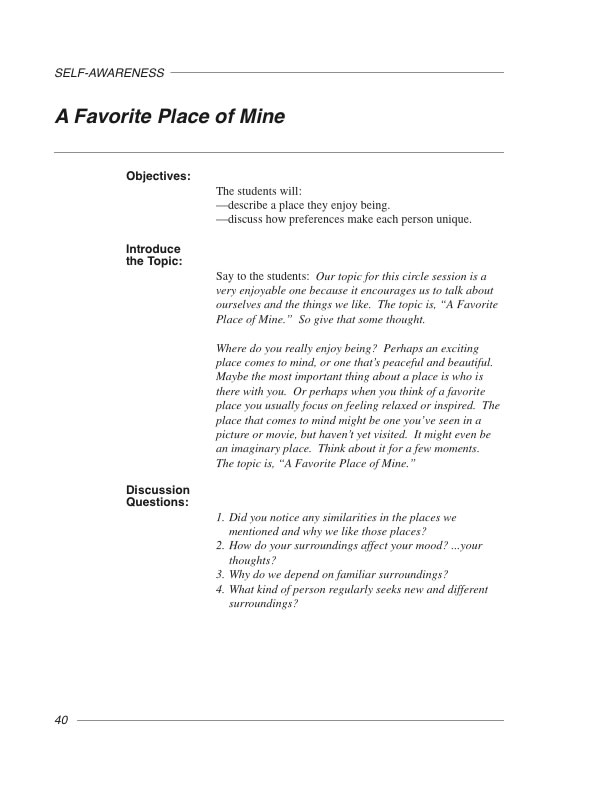
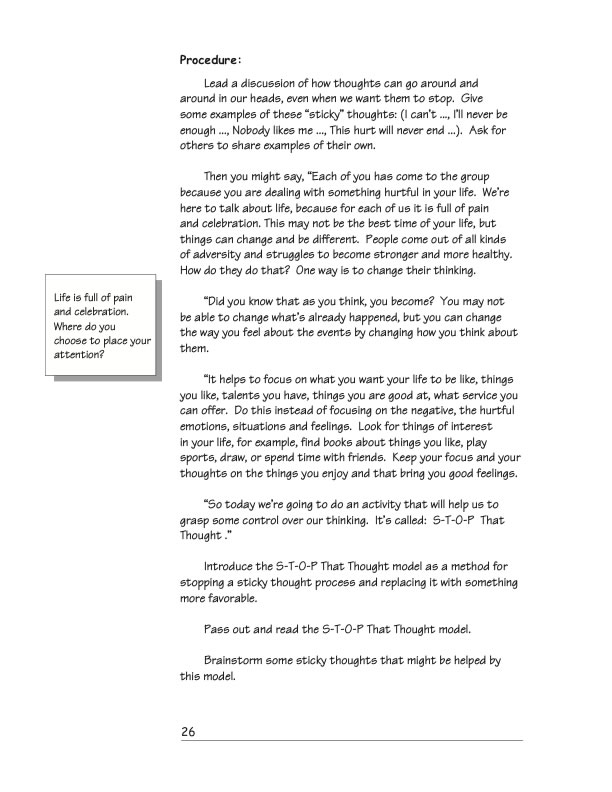
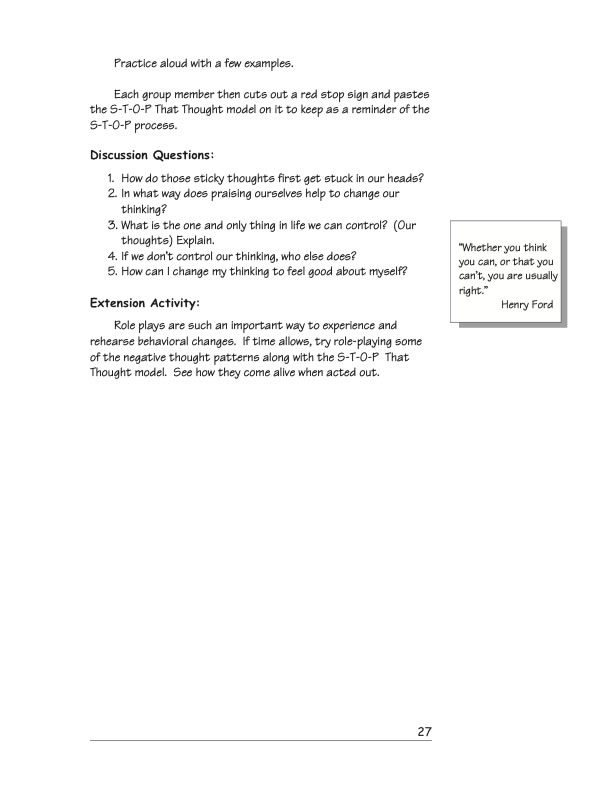
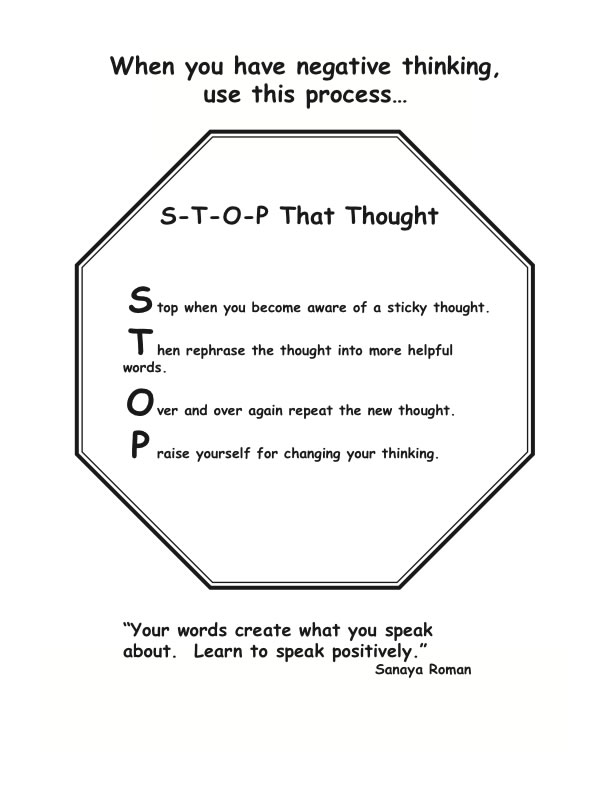
You can check the book out HERE.
Just click HERE to open a fully reproducible PDF of this activity and experience sheet…
If you like our blog resources and would like to receive them regularly, please subscribe here or on our website at www.InnerchoicePublishing.com
If you are already a subscriber, I hope you find this activity valuable. Help us grow our blog by sharing these activities and encouraging others to join. Thank you.
Thanks so much for reading!
Susanna
Teaching Kindness
Today’s blog was inspired when I was sharing a meal the other day with a teacher friend. I asked how the new school year was starting out, and she shared that a challenge was getting the students to be kind to one another. I thought that providing a kindness activity today seemed the perfect response.
Kindness and Its Importance
Everyone intuitively knows the value of being kind, and teaching kindness and empathy to children. Observing or participating in acts of kindness sets a positive and caring tone for the day as well as reinforces important social-emotional skills. Modeling and reinforcing kindness makes it a practical and commonplace skill.
Many benefits have been reported in support of directly teaching kindness in schools including: Happy caring children; Greater sense of belonging and improved self-esteem; Improved health and less stress; increased feelings of gratitude; Better concentration; Reduced depression; Less bullying. In a 2016 report the US Department of Education said that research demonstrates the importance of kindness: “Students learn best when they feel safe, supported, challenged and accepted”. These are all elements of kindess.
Here’s Your Kindness Resource
This week’s activity helps students learn about the richness found in kind acts and behaviors and how they can be a benefit to all aspects of their lives. The activity, A Book of Kindness, comes from the resource guide, Caring and Capable Kids.
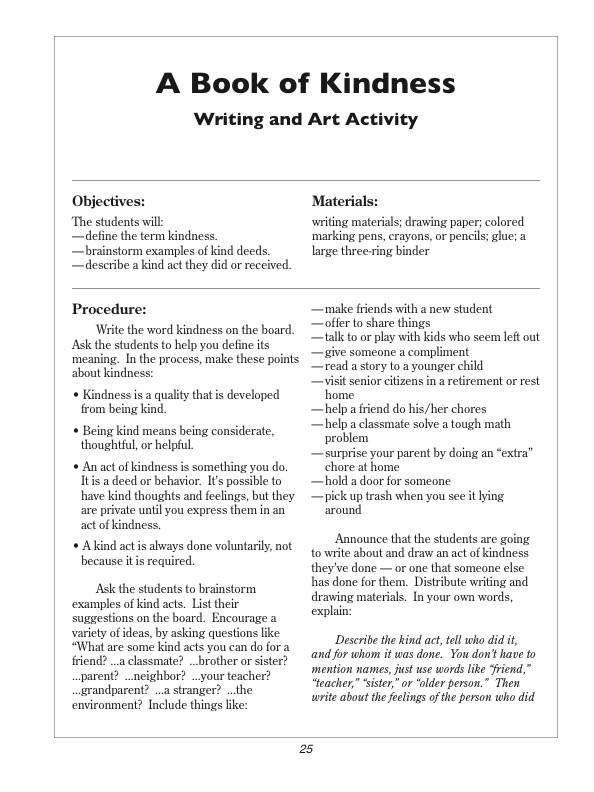
You can check the book out HERE.
Just click HERE to open a fully reproducible PDF of this activity and experience sheet…
If you like our blog resources and would like to receive them regularly, please subscribe here or on our website at www.InnerchoicePublishing.com
If you are already a subscriber, I hope you find this activity valuable. Help us grow our blog by sharing these activities and encouraging others to join. Thank you.
Thanks so much for reading!
Susanna
Helping Students Develop Positive Attitudes
It’s All About Attitude
It has been said that life is forty percent what we make it, and sixty percent how we take it. Whatever the ratio, the point is clear that attitude is a defining lens. We always have a choice about how we respond to events in our lives.
To recognize the benefits of developing positive, responsible attitudes, young people must first grow in self-awareness. They must learn to understand feelings and their relationship to thoughts, and they must understand that their own feelings are normal, predicable, and susceptible to control. Feelings convey messages about conditions and events going on in the environment, and provide important clues to the way the brain is processing information.
As William James said over one hundred years ago, “Human beings, by changing the inner attitudes of their minds can change the outer aspects of their lives.”
A Tool You Can Use
This week’s activity helps students learn about the power of their attitudes – how negative attitudes cause problems and how positive attitudes can be a benefit to all aspects of their lives. The activity, Developing a Positive Attitude, has two parts – a group discussion followed by an experience sheet.
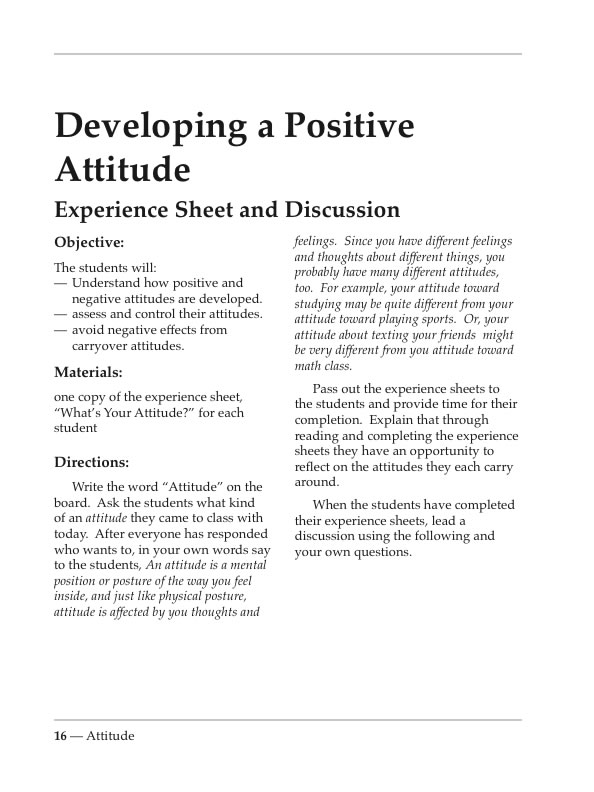
You can check the book out HERE.
Just click HERE to open a fully reproducible PDF of this activity and experience sheet…
If you like our blog resources and would like to receive them regularly, please subscribe here or on our website at www.InnerchoicePublishing.com
If you are already a subscriber, I hope you find this activity valuable. Help us grow our blog by sharing these activities and encouraging others to join. Thank you.
Thanks so much for reading!
Susanna
How I Show Respect Toward Others
Reflections on Respect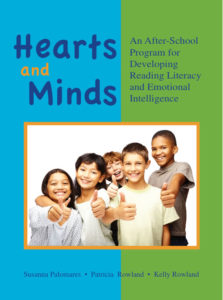 Here’s a follow up on last week’s Blog which discussed the importance of teaching students the value of respect. Helping students understand the significance of a respectful attitude and helping them identify specific actions and behaviors that demonstrate respect is the purpose of today’s Sharing Circle. This Sharing Circle topic comes from the activity book (Grades 3-6), Hearts and Minds – An After-School Program for Developing Reading Literacy and Emotional Intelligence. The topic is, How I Show Respect Toward Others…
Here’s a follow up on last week’s Blog which discussed the importance of teaching students the value of respect. Helping students understand the significance of a respectful attitude and helping them identify specific actions and behaviors that demonstrate respect is the purpose of today’s Sharing Circle. This Sharing Circle topic comes from the activity book (Grades 3-6), Hearts and Minds – An After-School Program for Developing Reading Literacy and Emotional Intelligence. The topic is, How I Show Respect Toward Others…
 Here’s Your Monday Morning Sharing Circle. Enjoy!
Here’s Your Monday Morning Sharing Circle. Enjoy!
Do you want more information? • Leading a Sharing Circle • Sharing Circle Rules • Books and Resources • Free Activities • Subscribe
Here’s How It’s Done
Gather everyone into a circle. Explain the rules for sharing, and get agreement from everyone that they will follow the rules.
Sharing Circle Rules:
- Everyone gets a turn to share, including the leader.
- You can skip your turn if you wish.
- Listen to the person who is sharing.
- There are no interruptions, probing, put-downs, or gossip.
- Share the time equally.
After everyone has shared, who wants to share, ask the discussion questions. Get more in-depth information here.
Just click HERE to open a fully reproducible PDF of this Sharing Circle activity…
If you like our blog resources and would like to receive them regularly, please subscribe above or on our website at www.InnerchoicePublishing.com
If you are already a subscriber, I hope you find this activity valuable. Help us grow our blog by sharing these activities and encouraging others to join.
Thank you. Thanks so much for reading!
Susanna
Activities for Teaching Respect
Teaching children about respect and developing positive relationships is one of the most important things we can do, especially in today’s increasingly disrespectful world.
What It Takes
Being intentional and specifically having your students engage in activities focussed on respect will help them to understand the importance of their respectful actions and to understanding the difference between respectful and disrespectful actions and words.
Respect means showing regard for the worth of someone or something. It includes respect for self (self-esteem), respect for others, and respect for the environment, including other life forms. All other varieties of respect are outgrowths of these three. Respecting someone’s property, for example, extends from respecting the owner of the property.
When we teach students to show respect, we prevent them from hurting what they ought to value. If we are completely successful, they will end up valuing that for which they have demonstrated respect.
Other ways to foster respect include:
- Create a democratic classroom environment, in which the rights of all students are respected. Show your own regard for every student, every day.
- Expect students to be polite and courteous. Consistently model the use of “please,” “thank you,” “excuse me,” etc.
- Really listen to the opinions and contributions of students. Make it a rule that students listen respectfully to each other.
- Show your appreciation for diversity. Create an environment in which individual differences are celebrated, and where all students feel included and interdependent.
- Teach students a simple decision-making process and encourage them to use it. Respect their ability to make decisions for themselves. Serve as their advisor and consultant.
- When students have difficulty understanding how their behavior affects others, suggest that they apply the classic test of reversibility. Ask them: Would you want to receive this kind of treatment?
Here’s a great activity for working on one important aspect of RESPECT:
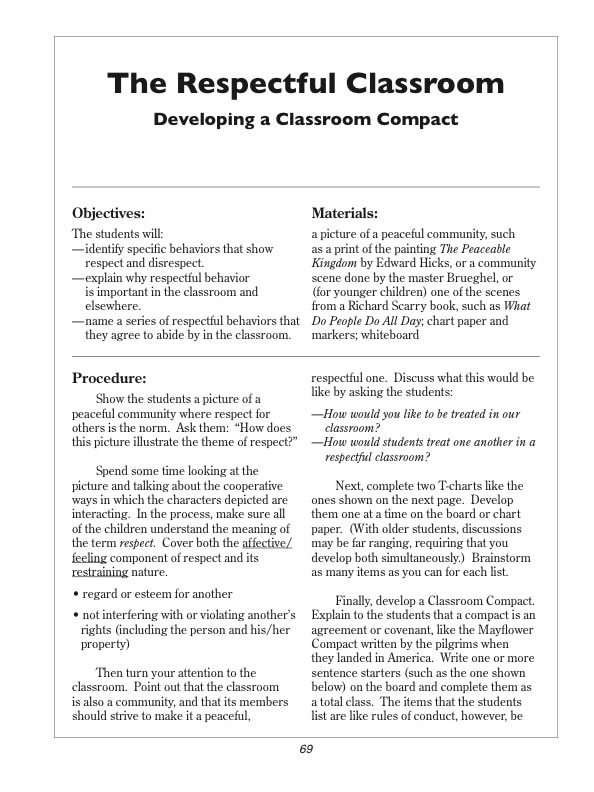
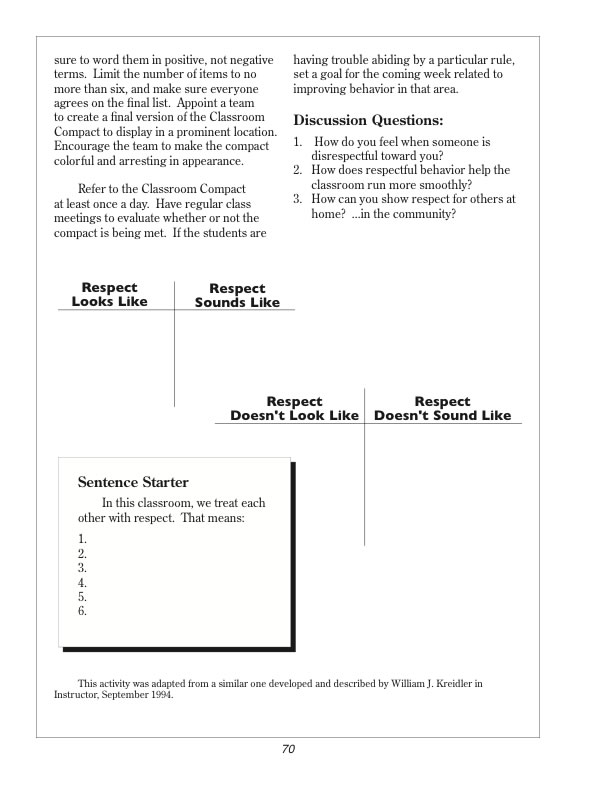
You can check the book out HERE.
If you like our blog resources and would like to receive them regularly, please subscribe here or on our website at www.InnerchoicePublishing.com
If you are already a subscriber, I hope you find this activity valuable. Help us grow our blog by sharing these activities and encouraging others to join. Thank you.
Thanks so much for reading!
Susanna
Back to School Ideas for Getting to Know Your Students
Getting a Good Start
It’s your first day of school and you have a whole new group of students to get to know. By being interested in who they are as people, their interests, feelings, experiences, backgrounds etc., you’re making them feel welcome and setting a tone of caring, and by making them feel welcome and showing that you care you’re building positive relationships and winning them over right from the start. When you get to know your students on a personal level you’ll have a better understanding of group interactions, personal likes and dislikes, and motivating interests. This can help you plan lessons, organize groups, and diffuse potential problems.
Some Great Resources
Here are a few quick activity sheets and some suggestions for follow up group interactions that help you to get to know your students and for them to get to know each other.
One Last Thought…
It’s important to remember that building positive relationships and maintaining a classroom of caring is about taking time on a regular basis to be in touch with the human side of your students. Check out more activities from the many books available from the Innerchoice Publishing website
Activities for the elementary grades – All About Me
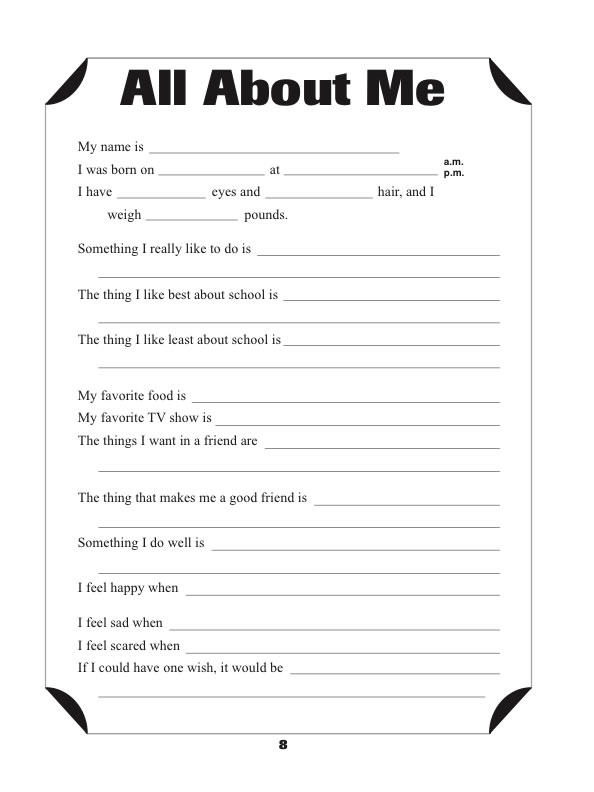
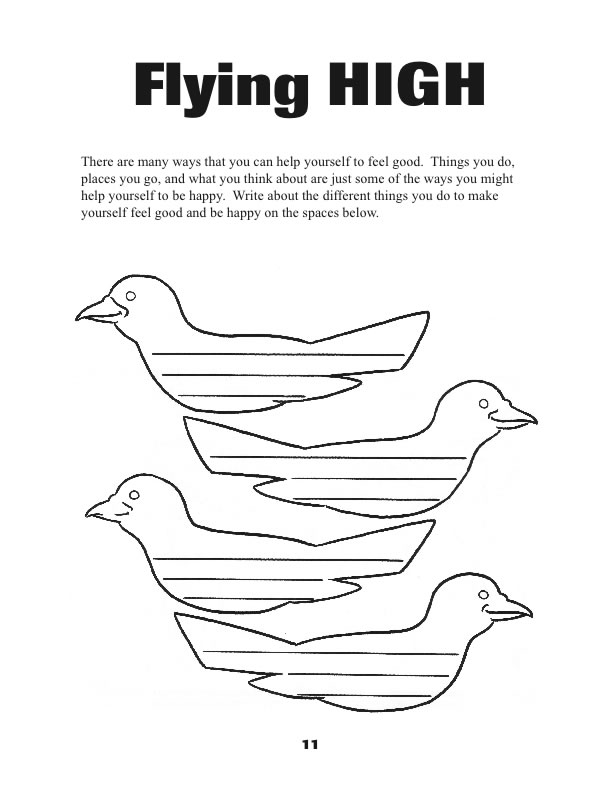

Activities for the secondary grades – Understanding Me
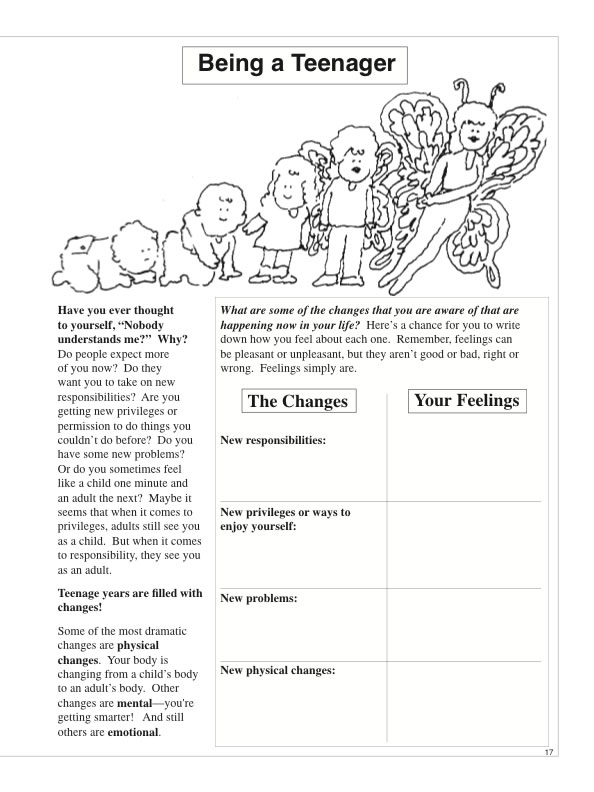
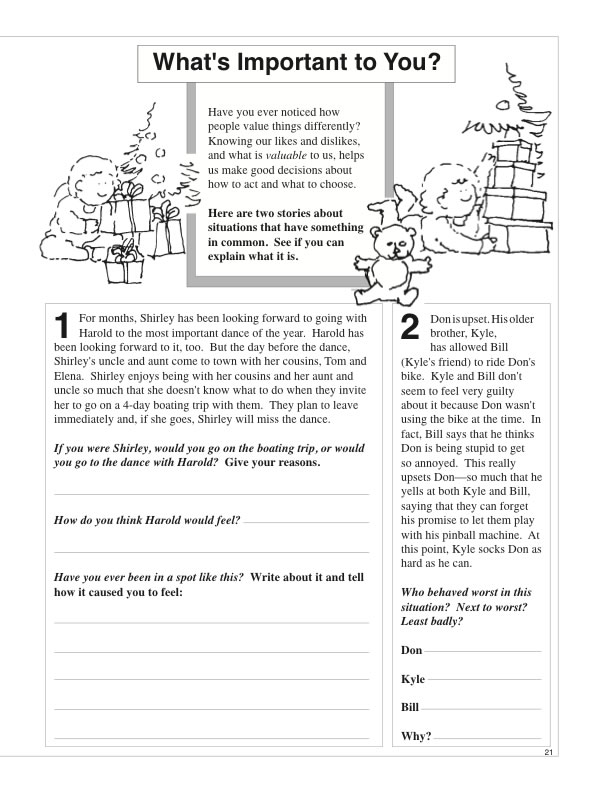
Engaging Immigrant Parents
Welcoming families as vital partners in the school community can create a stimulating learning environment. It can also be frustrating and challenging, especially when social customs and mores, language differences, even fear become barriers that can hinder this partnership.
The Student Reality
In many cases, immigrant students prove surprisingly resilient and eager to mimic the behaviors and values of their American peers. Some come from countries where Western culture has already made significant inroads, whether through television, movies, music, technology or MacDonald’s. However, too rapid acculturation can often spell trouble at home, as conflicts develop between children intent on change and parents determined to preserve traditional values.
Linking with Parents
This book is about reaching out to immigrant parents because it is often the parents, not the students, who need the greatest understanding and help. School systems differ around the world. In many countries parent involvement is not expected, or wanted. Immigrant parents may not understand how the U.S. school system works and be totally unfamiliar with the concept of parent involvement. In addition to not understanding the school system they often have very little knowledge of how to support their children’s educational development.
Few children, regardless of culture, achieve their full academic, social and leadership potential without the support of a caring, involved family. Talented, able immigrant children can easily fall by the wayside if their parents are so alienated from the educational system that they are unable to assist with homework, language acquisition, and a whole array of compliance issues ranging from simple attendance to behavior codes and discipline policies. When parents are in overt (or covert) conflict with the educational system, the cultural tug-of-war for the mind and heart of the child can be devastating.
By extending a welcoming hand, making efforts to communicate, and involving immigrant parents in the schooling of their children, we can circumvent many of these problems. It’s a preventive approach, really, one that attempts to support and strengthen the child at the foundational level.
Building a Repertoire
As educators, we need to comprehend and address a complete range of cultural issues. To do this, we have to understand the values, customs and worldview of the dominant American culture as well as those of immigrant students and their families. We must be aware of the unique behaviors of each immigrant child, while appreciating and understanding the cultural context from which these behaviors originate. We should also try to understand the immigration experience and the process of acculturation — which is often painful and conflicting.
Cultural Factors to Keep in Mind
Understanding your own culture is a major step toward understanding others. It’s like anything else. Having a context and a basis for comparison makes identifying differences a lot easier. Remember that while values are the bedrock of culture, they often can only be understood by examining customs, communication styles and individual behaviors. The values themselves are hidden.
Communication styles and patterns, including body language, vary from one culture to another. For example, people from some cultures pull away in response to direct questioning or see “why” questions as accusations. Others feel an obligation to please the person with whom they are talking and think nothing of massaging the facts in order to do so. In some cultures, smiling and nodding have little to do with genuine pleasure or agreement. In others, having direct eye contact with someone in an authority position is considered rude.
In communicating with immigrant students and their families, it is important to do perception checks. Is your interpretation correct? Check with the other person. The rules for good listening and responding don’t change, but if you are willing and able to make small adjustments in your style of communicating (to more closely mirror the style of the other person), communication will be improved.
The more you know about a student’s culture, the better the chances of effective communication. This doesn’t mean that you have to devote hours of study to becoming multiculturally literate. Showing an interest in the diverse experiences of students and their families is an important way to build relationships. Observing, asking questions and exploring differences in an open and honest way will go a long way to building insight and understanding. For example, questions and observations may tell you such things as:
• The amount of personal space an individual requires. (This tells you how much physical distance to allow between you and the other person.)
• How time is viewed. Does the American expectation of punctuality have meaning in the other culture? Is the fast pace of American life creating conflicts for the student or family? Do children and their parents understand and accept the concept of deadlines and due dates for projects and papers?
• The family’s decision-making process. How does information seem to flow from the child to the home and back again to you? Is there an established protocol for gaining parent cooperation? Do family members other than parents (e.g., grandparents, aunts, siblings) need to be involved?
Gauge the amount of information you provide. This is particularly important when working with immigrant parents. Individuals experiencing culture shock are already overwhelmed. Piling on reams of information is probably going to be counterproductive. Prioritize what you need to convey to parents and then deal with it in small chunks. Have more contacts of shorter duration.
You can check the book out HERE.
If you like our blog resources and would like to receive them regularly, please subscribe here or on our website at www.InnerchoicePublishing.com
Thanks so much for reading!
Cristina Casanova (Author)
An Expression of Social-Emotional Learning
Never neglect or take for granted the emotional life of your students. Feelings, self-awareness, life skills, conflict management, self-esteem, and all of the other developmental areas now identified as social emotional learning are critically important. An impressive array of research from multiple fields supports the validity of time and energy spent by educators in these domains. Emotions are not unruly remnants of stone-age survival to be hushed and otherwise ignored while we develop cognitive skills. Emotions drive our behavior, shape our values, and predispose us to choose one course of action over others. Emotional and rational skills are equally important interdependent components of human intelligence.
This Sharing Circle topic comes from the elementary grades activity book, Social-Emotional Learning Activities For The Elementary Grades. The topic is, A Time I Showed Someone That I Care…
 Here’s Your Monday Morning Sharing Circle.
Here’s Your Monday Morning Sharing Circle.
Enjoy!

Do you want more information?
• Leading a Sharing Circle • Sharing Circle Rules
• Books and Resources • Free Activities • Subscribe
Here’s How It’s Done
Gather everyone into a circle.
Explain the rules for sharing, and get agreement from everyone that they will follow the rules.
Sharing Circle Rules:
• Everyone gets a turn to share, including the leader.
• You can skip your turn if you wish.
• Listen to the person who is sharing.
• There are no interruptions, probing, put-downs, or gossip.
• Share the time equally.
After everyone has shared, who wants to share, ask the discussion questions.
Get more in-depth information here.
Just click HERE to open a fully reproducible PDF of this Sharing Circle activity…
If you like our blog resources and would like to receive them regularly, please subscribe here or on our website at www.InnerchoicePublishing.com
Thanks so much for reading!
Susanna
PS: If a friend forwarded this to you, you can just sign up to get your own weekly Innerchoice Counselor Activit

